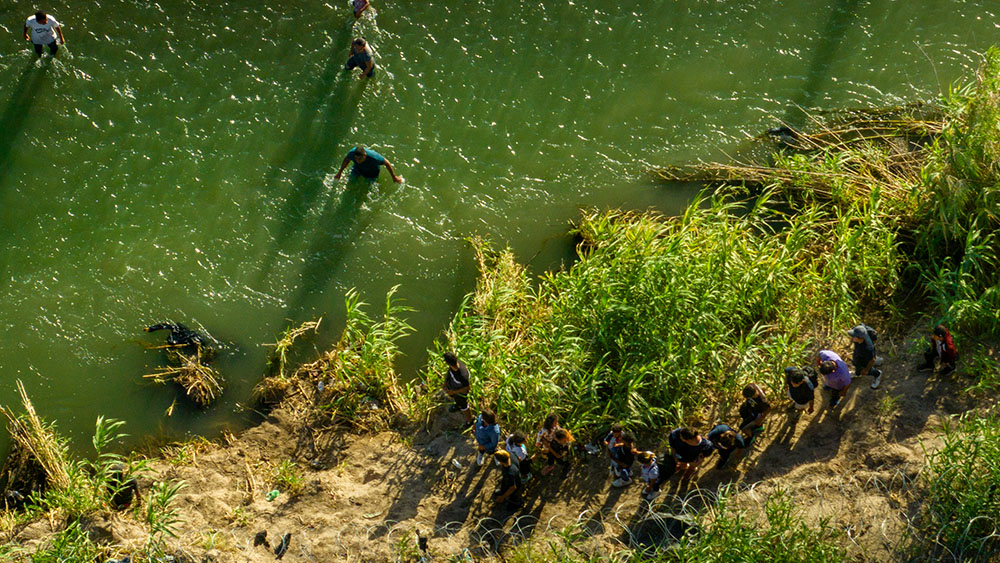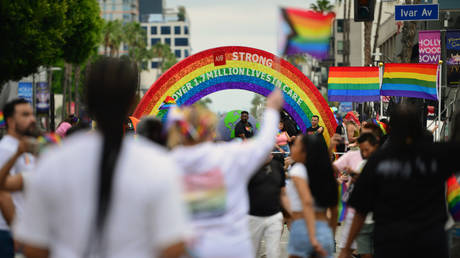FAA FOIA request for 1 October helicopter flight radar data denied as federal cover-up of potential belt-fed gunship attack continues
by Shepard Ambellas, Intellihub:
 LAS VEGAS (INTELLIHUB) — A Freedom of Information Act (FOIA) request filed December 6, 2017, seeking “primary and secondary surveillance radar” return data from McCarran International Airport (KLAS) in a “byte for byte format” between the hours of 7 p.m. and 1 p.m. on the night of the 1 October shooting and a separate FOIA request seeking video surveillance footage of the airport’s “western edge” runways and “specifically the helicopter pads from both Sundance and Maverick Helicopters” between the hours of 9 p.m. and 11 p.m. and all “air traffic control recordings of ground and terminal communications from KLAS and the helicopters” between 9 p.m. and 11 p.m. was denied by the Federal Aviation Administration which ultimately cited “contemporaneous criminal investigations into those same events” after several months of correspondence.
LAS VEGAS (INTELLIHUB) — A Freedom of Information Act (FOIA) request filed December 6, 2017, seeking “primary and secondary surveillance radar” return data from McCarran International Airport (KLAS) in a “byte for byte format” between the hours of 7 p.m. and 1 p.m. on the night of the 1 October shooting and a separate FOIA request seeking video surveillance footage of the airport’s “western edge” runways and “specifically the helicopter pads from both Sundance and Maverick Helicopters” between the hours of 9 p.m. and 11 p.m. and all “air traffic control recordings of ground and terminal communications from KLAS and the helicopters” between 9 p.m. and 11 p.m. was denied by the Federal Aviation Administration which ultimately cited “contemporaneous criminal investigations into those same events” after several months of correspondence.
Additionally, the original FOIA request provided to Intellihub dated December 6, 2017, requested records of who “piloted helicopters N854MH, N858MH, N848MH, N208SH, and N231SH” in particular between the hours of 9 p.m. and 11 p.m. on October 1, 2017.
The request states:
Preliminary cause for alarm has been raised by examination of “FlightRadar24” archived data. Therefore officially authenticated data needs to be retrieved to either substantiate or negate the anomalous behavior of helicopters over Las Vegas during the horrific shooting event on Oct 1, 2017. In any event where coordinated efforts may be made to suppress information, suppress witnesses, and obfuscate facts the safest path for those involved is to rapidly disseminate relevant information to both state and federal law enforcement agencies, as well as the public they are sworn to protect. The lives of 58 people deserve to have all the facts immediately borne out.
In a response to the initial FOIA request the FAA made a “no records determination” which stated the following in the agency’s January 8, 2017 response:
A search was conducted by the Air Traffic Organization, System Operation Services, Performance Analysis Office using Federal Aviation Administration’s National Offload Program (NOP) repository but there were no records found responsive to your request. Please note that the NOP repository only has records for flights that operated under instrument flight rule (IFR), or under visual flight rules (VFR) and were tracked by air traffic control in a radar environment.
On January 18, 2018, a “request for reconsideration and appeal” regarding the FOIA request “no records determination” was placed “to all relevant parties” which stated:
I note that a denial was issued for flight track data on 5 aircraft using the NOP repository, however, my FOIA request was principally for the primary and secondary surveillance radar from KLAS (McCarran Airport) from 0200 UTC to 0800 UTC 10/02/2017 in a byte for byte format. In a separate FOIA request, I did also request information regarding 5 specific aircraft, so I will illustrate the complete initial requests (dated Dec 6, 2017) here:
- Per FOIA, I’d like a copy of both the primary and secondary surveillance radar from KLAS (McCarran Airport) from 0200 UTC to 0800 UTC on 10/02/2017 in a byte for byte format.
- In a seperate FOIA request, I’d also like any security footage from the FAA control center covering the western edge of KLAS — McCarran’s runways, and specifically the helicopter pads ofd both Sundance and Maverick Helicopters from approx 2100 – 2300 hrs Las Vegas time, 10/01/2017.
- In a tertiary FOIA request, I’d like ATC recordings of ground and terminal communications from KLAS with helicopters in flight from 0400 UTC to 0600 UTC 10/02/2017 in byte for byte format.
- If FAA has records of who piloted helicopters from 0400 UTC to 0600 UTC 10/02/1017, I request via FOIA the records of who piloted N854MH, N858MH, N848MH, N208SH, and N213SH.
- I also request the presice departure and arival times for each of the 5 aftermentioned helicopters.
- Lastly, via FOIA, [redacted] in relation to KLAS during 0200 UTC to 0800 UTC 10/02/2017.
It appears the FAA has conflated my request for secondary surveillance radar with my request for pilot/operator information for 5 specific helicopters. Therefore, FAA still needs to respond to the initial 6 requests, while simultaneously addressing this appeal. Reconsideration for this appeal is requested based on the attached information.
With respect to the flight track of 5 aircraft, the unique registration of those aircraft may have been insufficient, so perhaps FAA should additionally specify the following associated Mode-S codes:
Registration # N854MH, Mode-S code ABB74F
Registration # N858MH, Mode-S code ABC62B
Registration # N848MH, Mode-S code AB9EAC
Registration # N208SH, Mode-S code A1B153
Registration # N213SH, Mode-S code A1C63F
The bizarre denial of record specified that NOP only tracked aircraft under IFR and VFR and which were tracked by ATC in a radar environment. It is peculiarthat I must point out to FAA that McCarran Airport, KLAS, is in fact a radar environment, and importantly of class B airspace. It is also peculiar that I must point out to FAA that all 5 of the aftermentioned aircraft were tracked by ATC, as required by the rules of class B airspace, and is indicated by the attached audio and records retrievable from LiveATC.net among other sources.
According to the rules of U.S. Class B airspace, via Wikipedia: “All aircraft entering class B airspace must obtain ATC clearance prior to entry and must be prepared for denial of clearance. Aircraft must be equipped with a two-way radio for communications with ATC and an operating Mode C transponder, furthermore aircraft overflying the upper limit of any class B airspace must have an operating Mode C transponder. Visual flight rules (VFR) flights may proceed under their own navigation after obtaining clearance but must obey any explicit instructions given by ATC. Some class B airspaces include special transition routesfor VFR flight that require communication with ATC but may not require an explicit clearance. Other class B airspaces include VFR corridors through which VFR flights may pass without clearance (and without technically entering the class B airspace).”



